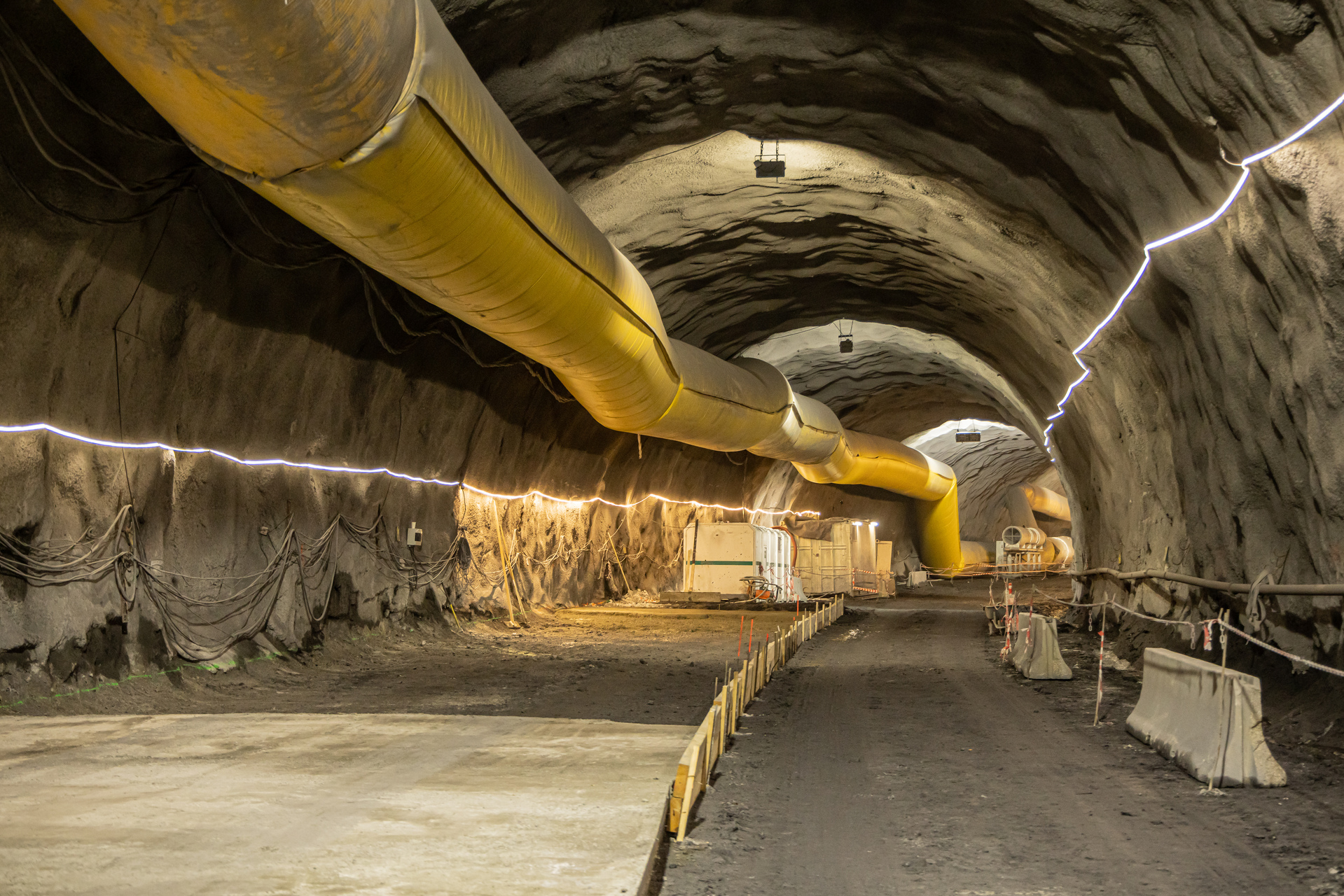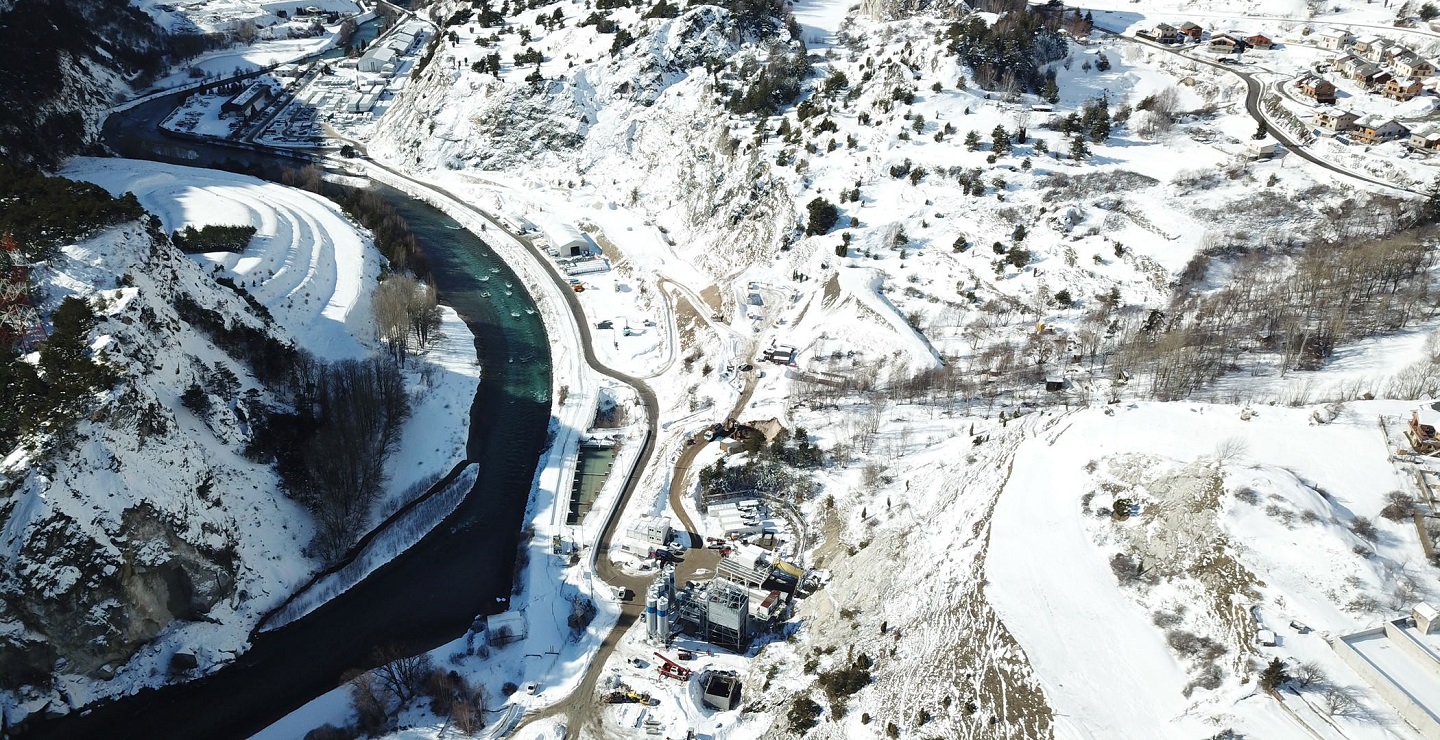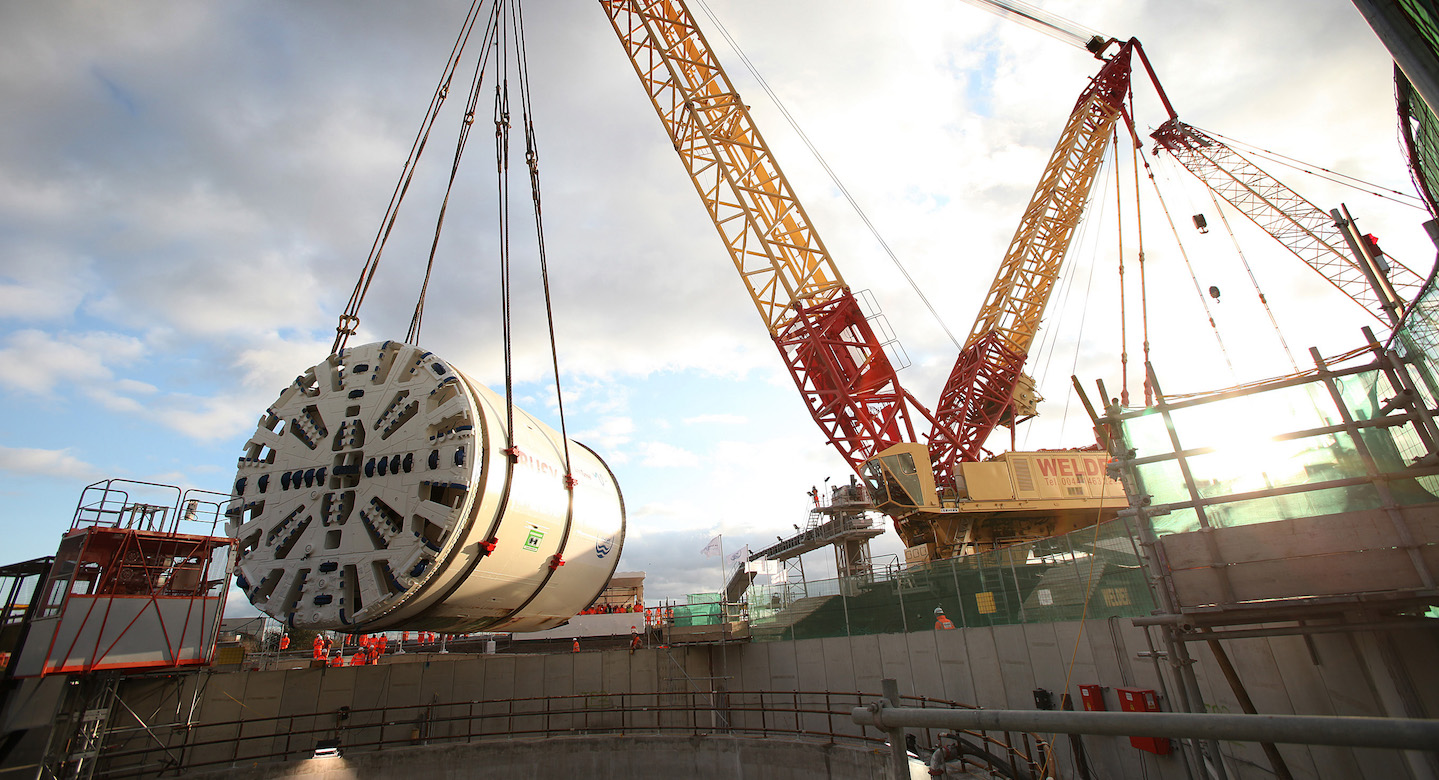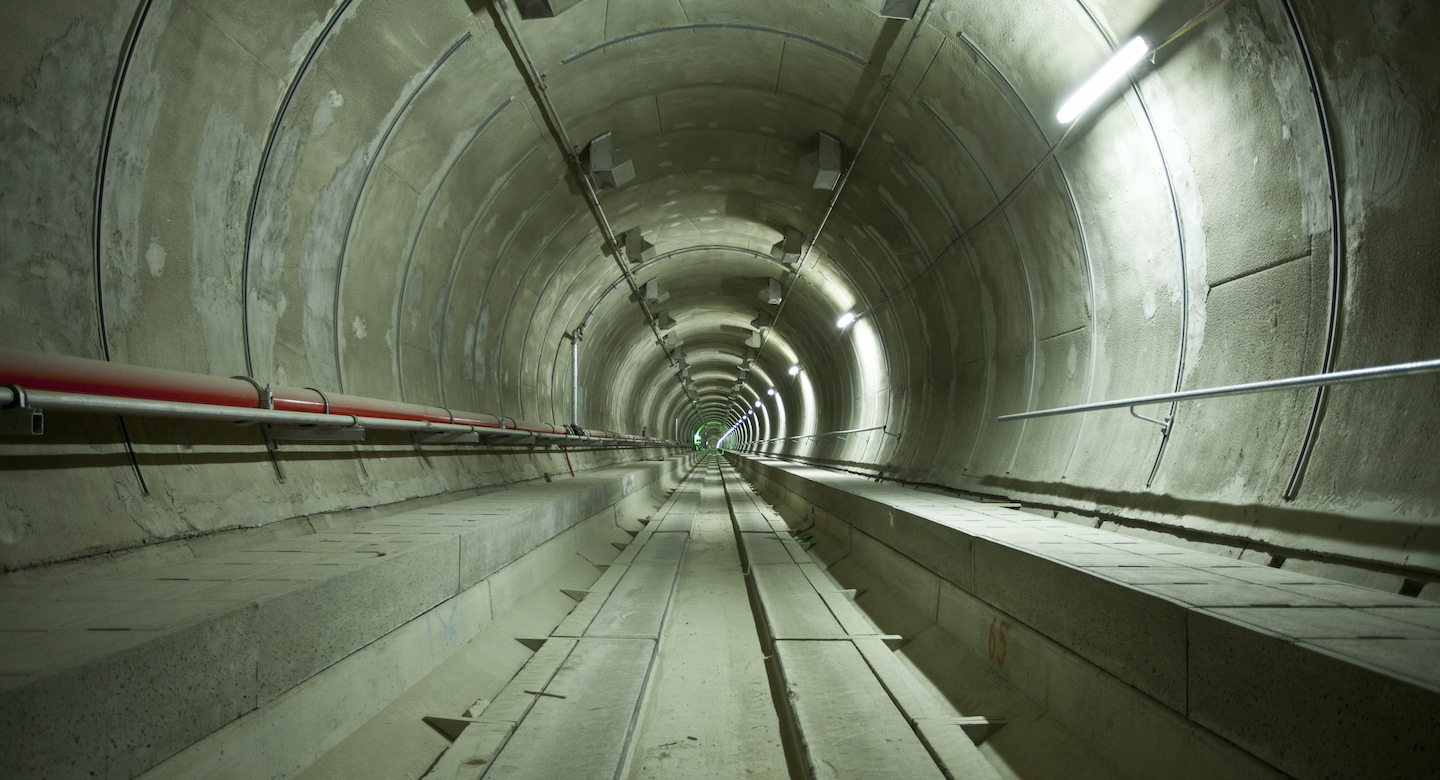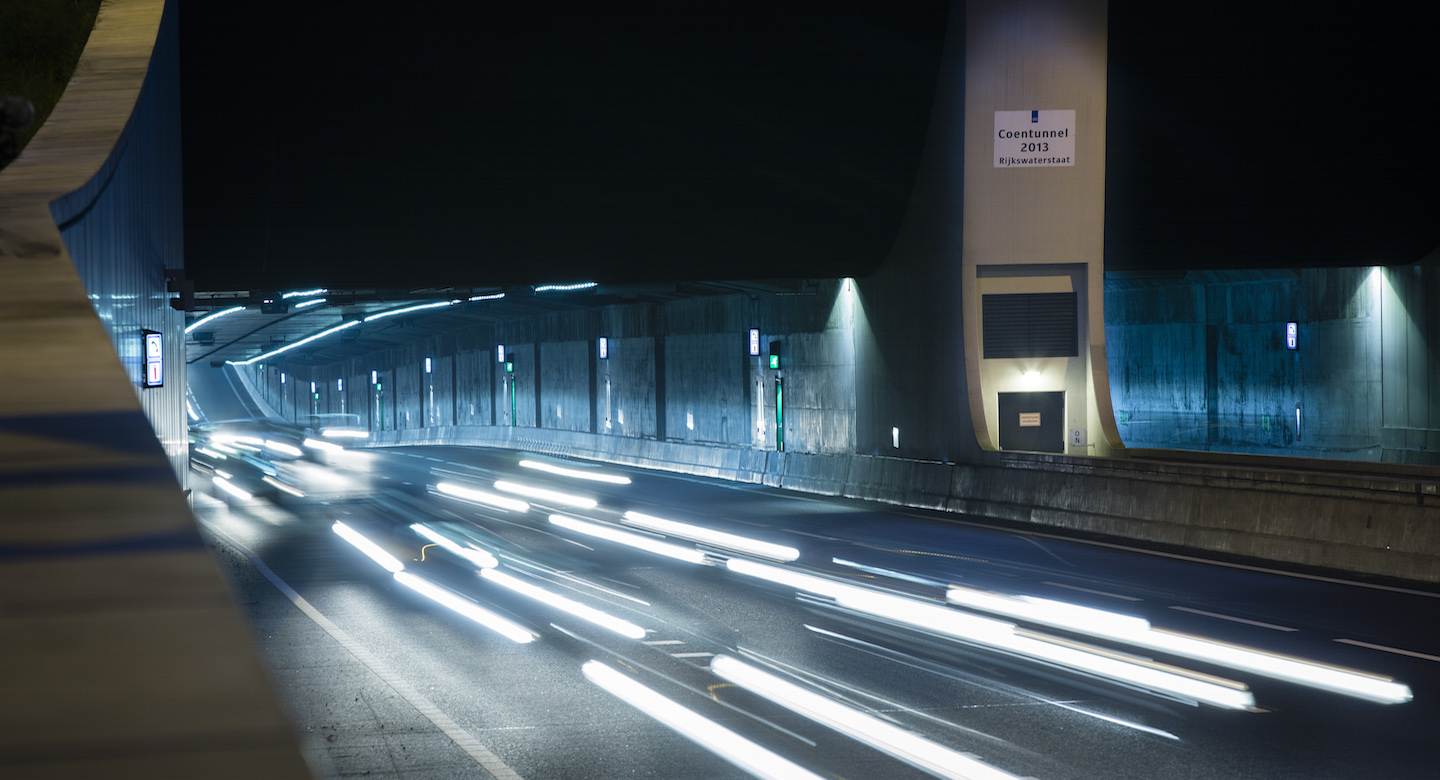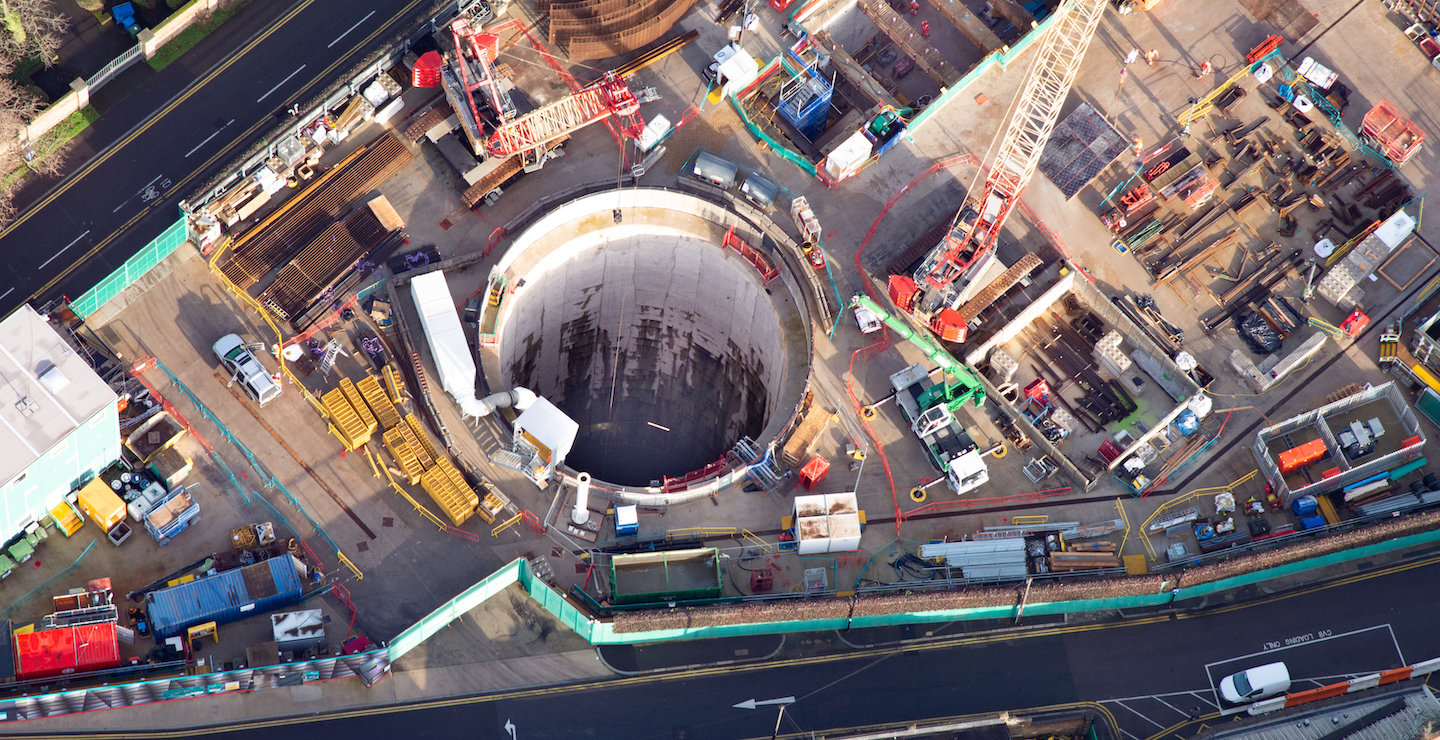The largest infrastructure and urban development project currently underway in Europe, the Grand Paris Express will double the length of the metro network with 200 km of new lines, including the creation of 4 new lines around Paris (lines 15, 16, 17 and 18), 90% of which will run underground, the extension of 2 lines (lines 11 and 14), 68 new stations and the development of new districts around these future urban-transport hubs. 3 million passengers will use these new lines every day.
The deployment and funding for this major urban-development project is being steered by the Société des grands projets (SGP), a public establishment created by the French government.
Since 2017, the Major Projects Division has leveraged its expertise to contribute to the construction of 14 stations, 38.6 km of tunnels, and 6.7 km of viaducts on lines 18, 15 South, 15 West South, and 14 South.
The Fréjus railway tunnel, opened in 1871, rises to an altitude of 1,300 metres and has a gradient of up to 3%. This means that the trains running through it have to be equipped with three locomotives, resulting in a 40% increase in energy costs.
The new tunnel, currently under construction, will transform the existing mountain line into a line with a lowland profile, making rail transport more competitive, with energy savings and higher speeds.
For the completion of the Lyon-Turin line, the work package awarded by the public client Tunnel Euralpin Lyon Turin (TELT) covers preparatory work on the future safety site at Modane, which is located at the centre of the base tunnel linking the international railway stations of Saint-Jean-de-Maurienne (France) and Susa (Italy) over a distance of 57 km.
Package 5A includes the construction of 4 ventilation shafts, each 500 metres long, at the foot of which 7 large caverns and 3 kms of galleries will be built, in the municipality of Avrieux; it represents a key stage in the project. Starting at the end of 2020 using an innovative technique known as raise-boring, the project took3 years and involved up to 450 people.
New metro Lines 2 and 3 in Athens criss-cross the city from north to south and east to west. This turnkey design-build project included two tunnels, 9.2 and 8.4 kilometres long, respectively, and no fewer than 21 stations. This infrastructure, which is used by 600,000 passengers on a daily basis, has reduced car traffic in the city centre and cut the pollution that is harming the Greek capital’s historic centre by 8%. Today, the Athens metro is among the most modern in all of Europe.
Reconciliar a los londinenses con un Támesis saneado constituye un desafío estructural para la capital británica. VINCI Construction Grands Projets contribuye a ello gracias al diseño y construcción de un colector de aguas pluviales y residuales entre la estación de bombeo de Abbey Mills y Beckton: el Lee Tunnel.
El proyecto abarca la construcción de una galería de 6,9 kilómetros de longitud y 7,2 metros de diámetro interno. Situado a una profundidad de hasta 80 metros, permitirá reducir a la mitad los 32 millones de m3 de aguas residuales que se vierten al Támesis cada año, capturándolas en su origen.
On May 30, 2016 in Copenhagen, the consortium made up of VINCI Construction Grands Projets, Soletanche Bachy International, BAM Infra / Int., CFE, Wayss & Freytag, MaxBo?gl, and PerAarsleffA/S signed design-build contracts with the government of Denmark to develop the world’s longest immersed road and rail tunnel, which will link Denmark and Germany. The project consists of three work packages: the immersed tunnel; the production plant for the tunnel’s prefabricated segments; and access ramps and bridges. This colossal, 17.6-kilometre structure will provide separate lanes for road and rail traffic. It will be the longest structure of its kind in the world.
El metro de El Cairo empezó a construirse en 1981 y su construcción no se ha detenido desde entonces. Esta colaboración forma parte de un programa de ordenamiento territorial: el metro de El Cairo es un ferrocarril metropolitano que responde a las necesidades de la capital, congestionada de día y de noche. En 1981 se trataba de la primera red de metro construida en África. Contribuimos a construir 3 líneas de metro de las cuales la línea 3 está parcialmente abierta y sus ampliaciones se entregarán en 2018. Cada estación consta de 3 niveles: el de la boletería, un nivel intermedio (en el que hay distintos locales técnicos) y el nivel de los andenes.
VINCI Construction Grands Projets was mandated by Tuc Rail to build the Liefkenshoek rail link to ease the flow of freight traffic in the port of Antwerp. This public-private partnership (PPP) contract, which has a 42-year term, called for the design, funding, construction, and maintenance of a dual railway infrastructure 16.2 kilometres long. To be more specific, the project called for a backfilled rail platform (4.76 km) with several concrete structures, an open-trench and cut-and-cover section (4.27 km), upgrades to the existing underwater Beveren tunnel to comply with current standards (1.2 km), and construction of two parallel tunnels, to be bored concurrently, each 5.97 kilometres long running under the Kanaaldock and the Escaut river. This infrastructure was designed to connect the north and south shores of the port of Antwerp and enable freight flow under the canal and the Escaut river.
Se encargó a VINCI Construction Grands Projets el diseño y construcción de un túnel sumergido (1 x 2 carriles y 2 x 3 carriles, de 715 m de longitud), así como la renovación y reconstrucción de un antiguo túnel sumergido.
Además de la construcción del túnel sumergido (2º Coentunnel) y la renovación del 1er Coentunnel, los trabajos incluyeron: 2 obras de ingeniería nuevas, 12 obras de ampliación, 13 obras de renovación, 14 kilómetros de calzadas así como la instalación de pantallas acústicas y anticontaminación.
Este proyecto se inscribe en el marco de desdoblamiento de carriles de la autopista A10 (zona noroeste de la carretera de circunvalación) y del primer tramo de la A8 al noroeste de Ámsterdam.
The Tideway Scheme consists of designing and building a system for wastewater and stormwater transfer and storage in central London. No less than 32 kilometres of tunnels will be necessary to increase the capacity of the existing network. This ambitious project aims to intercept wastewater and stormwater and divert them into treatment plants to prevent effluents into the River Thames. VINCI Construction Grands Projets, in a joint venture with Costain Limited, and Bachy Soletanche Ltd have been invited to participate in the construction of the East works package, one of the three making up the Tideway project. This package will connect Chambers Wharf and the Abbey Mills Pumping Station where the Lee Tunnel starts in East London. It consists of the design and construction of two tunnel sections: a main 5.5-km tunnel and a connecting 4.6-km tunnel.



